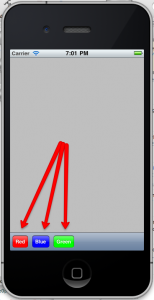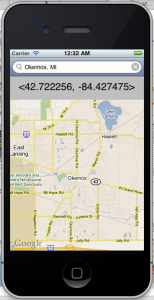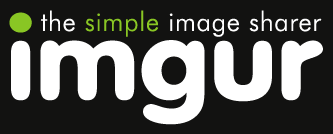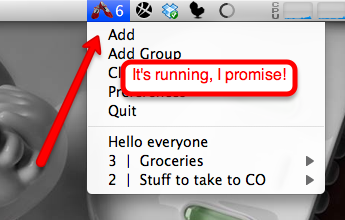EDIT: There is a new way to do this in iOS 5 that is much easier and nicer. If you want to support iOS 4, keep reading.
A UIBarButtonItem is an item that goes on a UIToolbar or a UINavigationBar. It’s typically a button but it can be a bunch of different things. I’m going to talk about the button. A UIBarButtonItem button takes on the color of the bar that it is on. You can set the tint of a UIToolbar, but you can’t change the colors of the buttons on it.
I found lots of different solutions for this online, most involving adding a UIButton as the customView of the UIBarButtonItem and having some sort of image for the color you need. That works fine, until you need a color that you don’t have an image for.
I found a better solution here. Basically what they figured out was that a UISegmentedControl with a style of UISegmentedControlStyleBar looks just like a UIBarButtonItem. A key difference is that UISegmentedControl has a nice tintColor property that you can use to change the colors.
So what I did was take CharlyBr‘s code and put it into a UIBarButtonItem category.
+(UIBarButtonItem*)barButtonItemWithTint:(UIColor*)color andTitle:(NSString*)itemTitle andTarget:(id)theTarget andSelector:(SEL)selector
{
UISegmentedControl *button = [[[UISegmentedControl alloc] initWithItems:[NSArray arrayWithObjects:itemTitle, nil]] autorelease];
button.momentary = YES;
button.segmentedControlStyle = UISegmentedControlStyleBar;
button.tintColor = color;
[button addTarget:theTarget action:selector forControlEvents:UIControlEventValueChanged];
UIBarButtonItem *removeButton = [[[UIBarButtonItem alloc] initWithCustomView:button] autorelease];
return removeButton;
}
You can check out my example project on GitHub.







 Today was the launch day for the Mac App Store. If you don’t know what it is, it’s basically the same as the iPhone App Store, but for OSX. A lot of developers have been looking
Today was the launch day for the Mac App Store. If you don’t know what it is, it’s basically the same as the iPhone App Store, but for OSX. A lot of developers have been looking 

